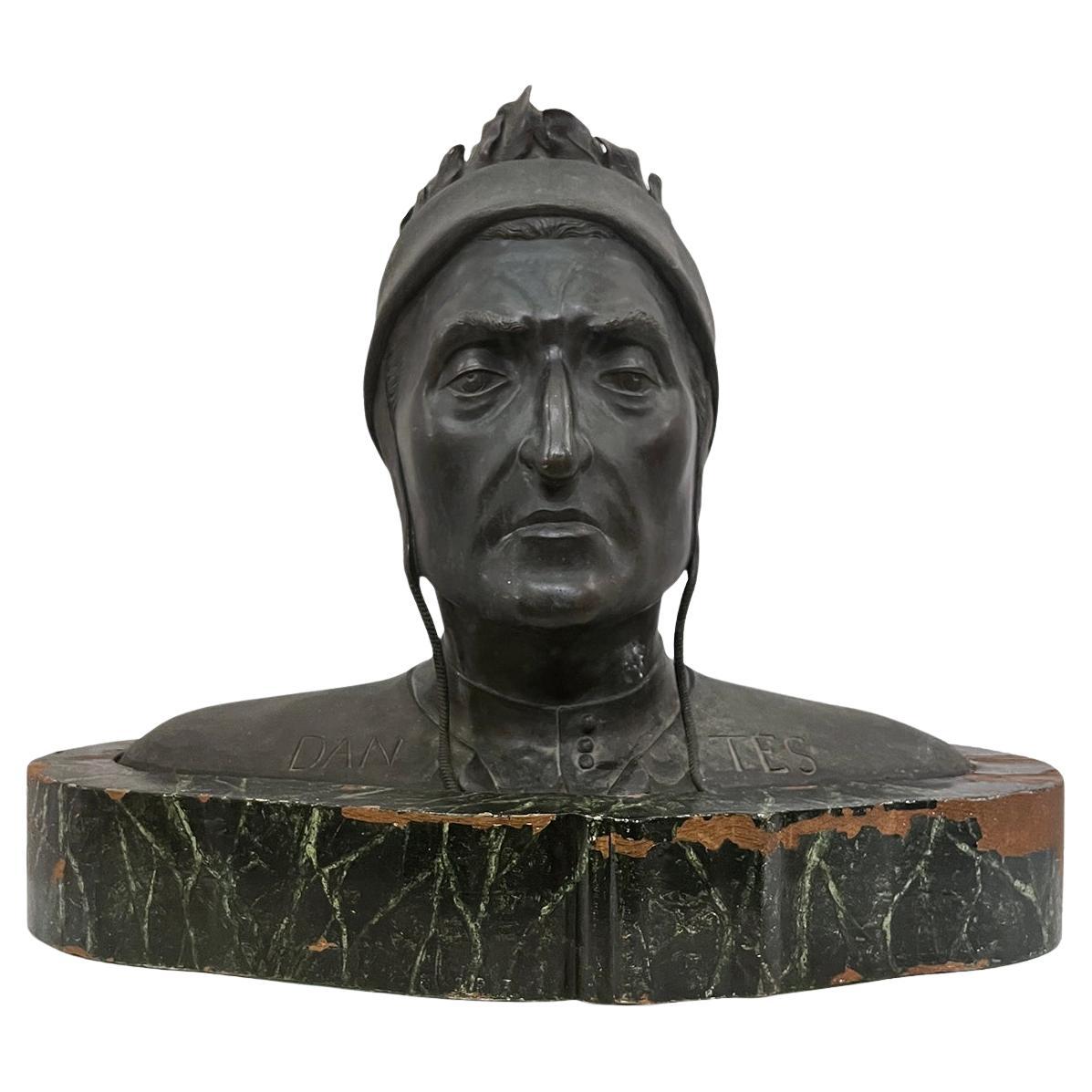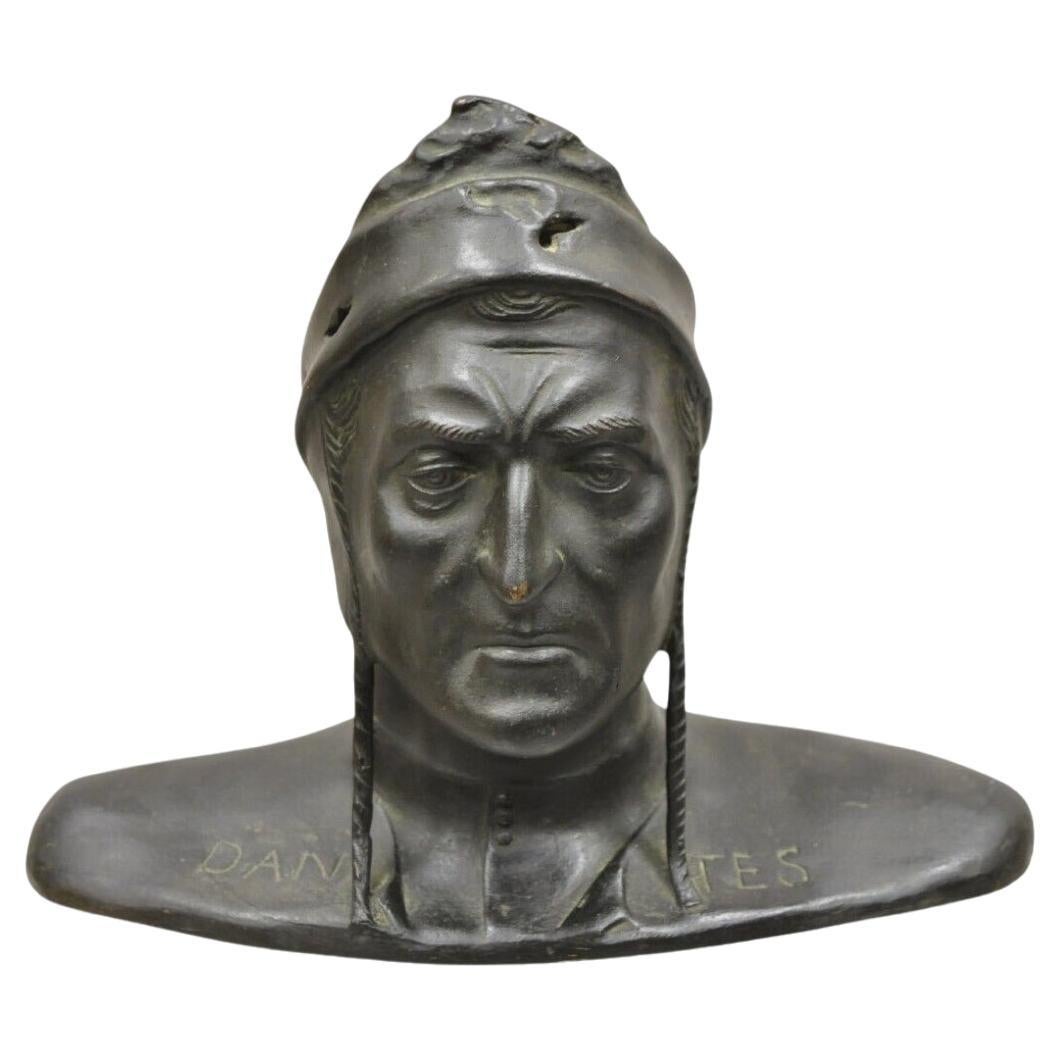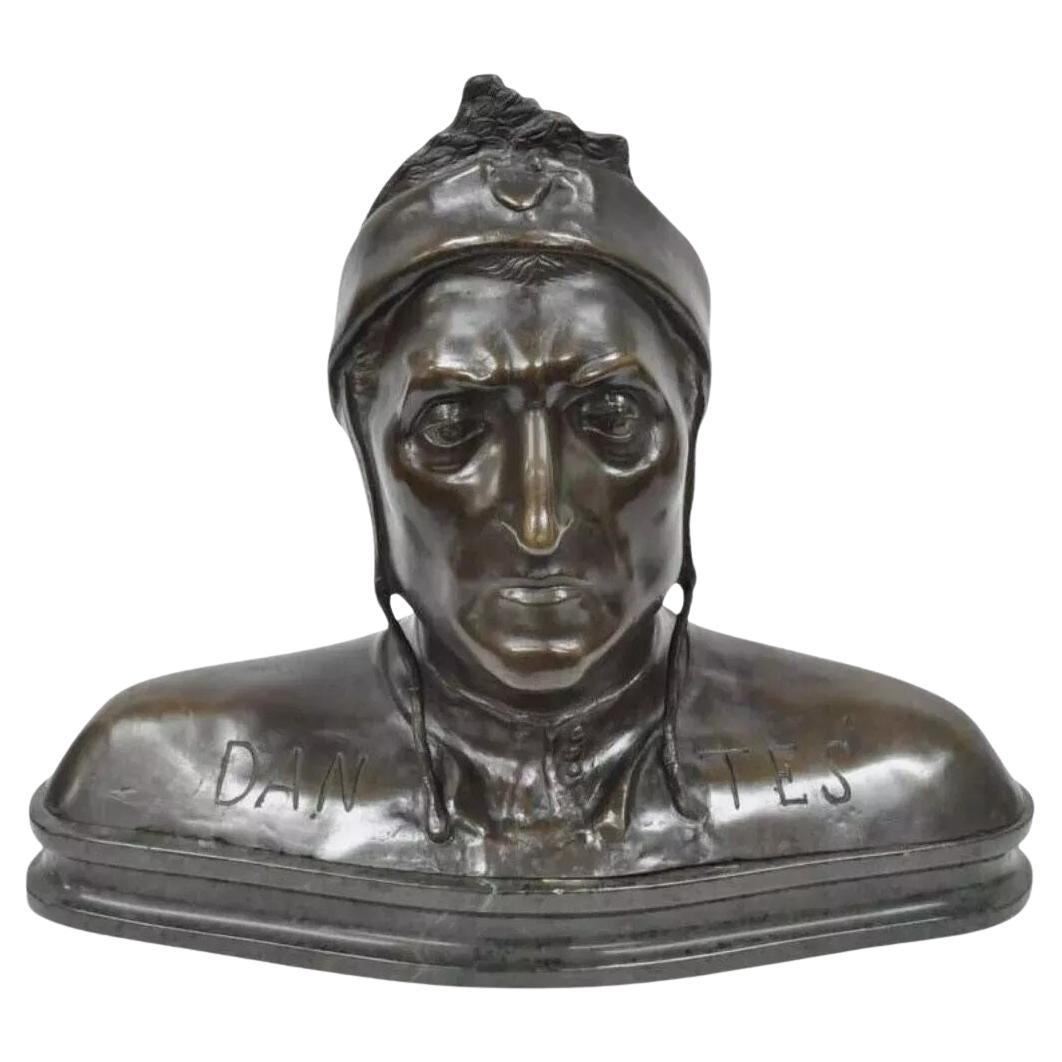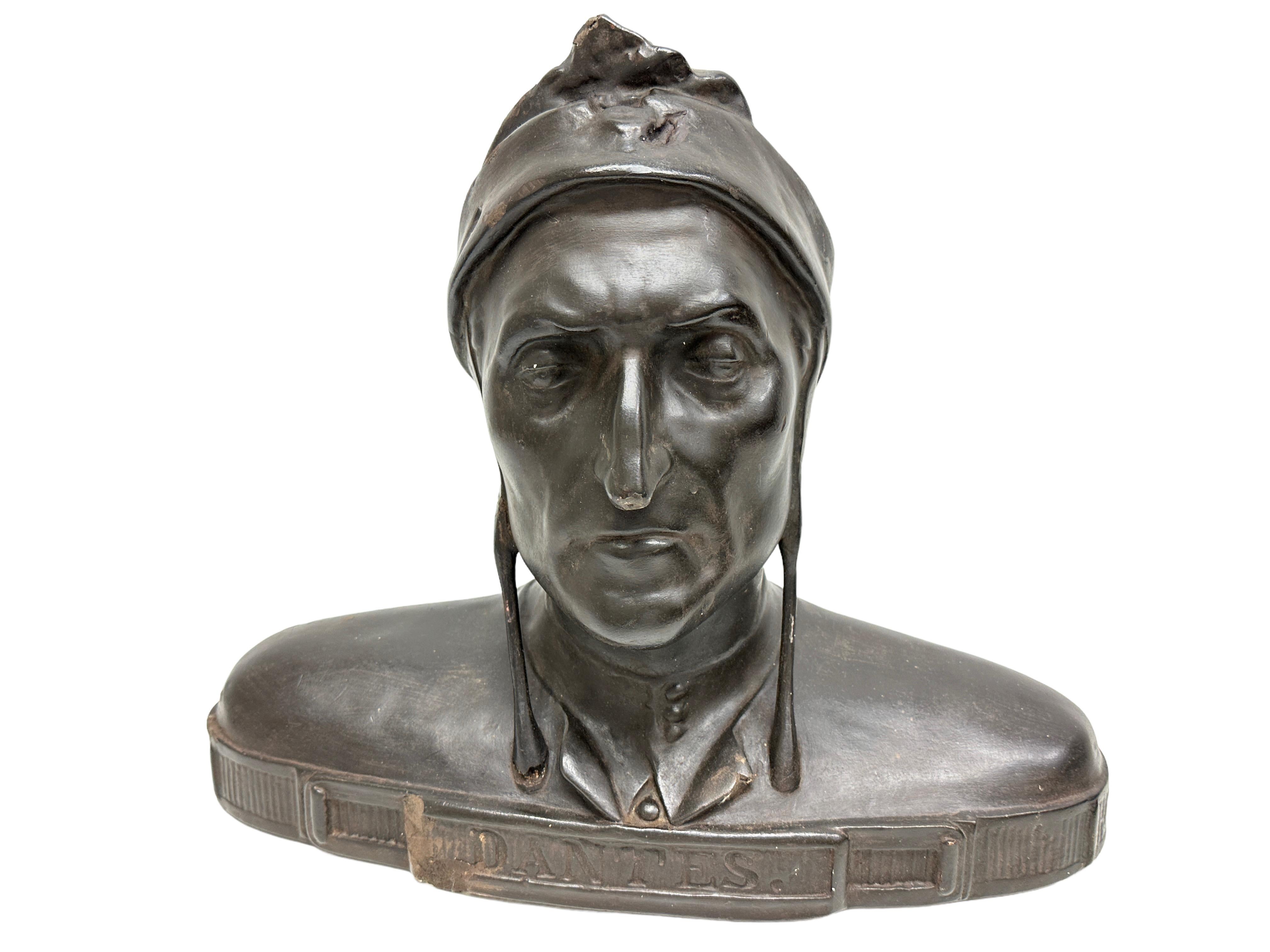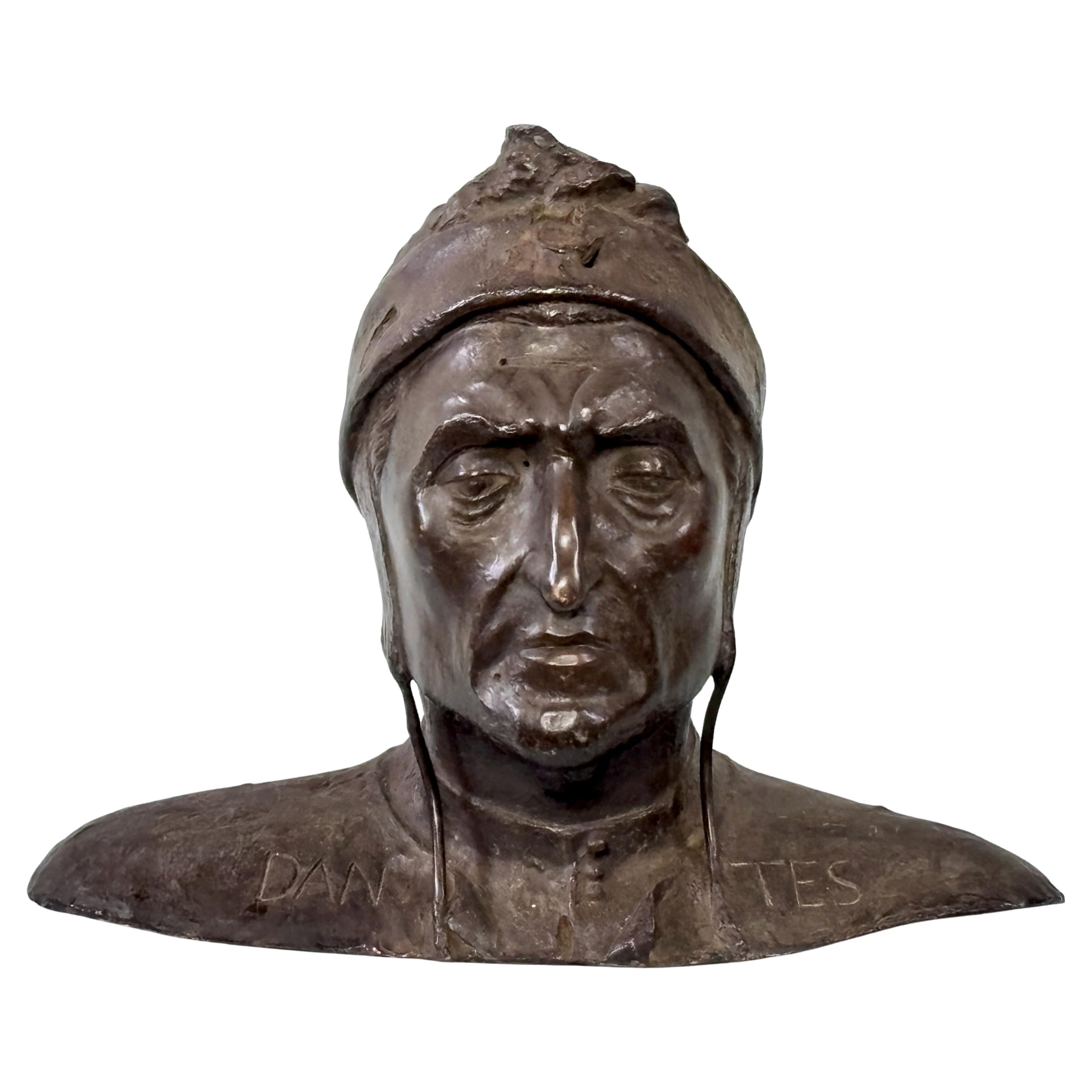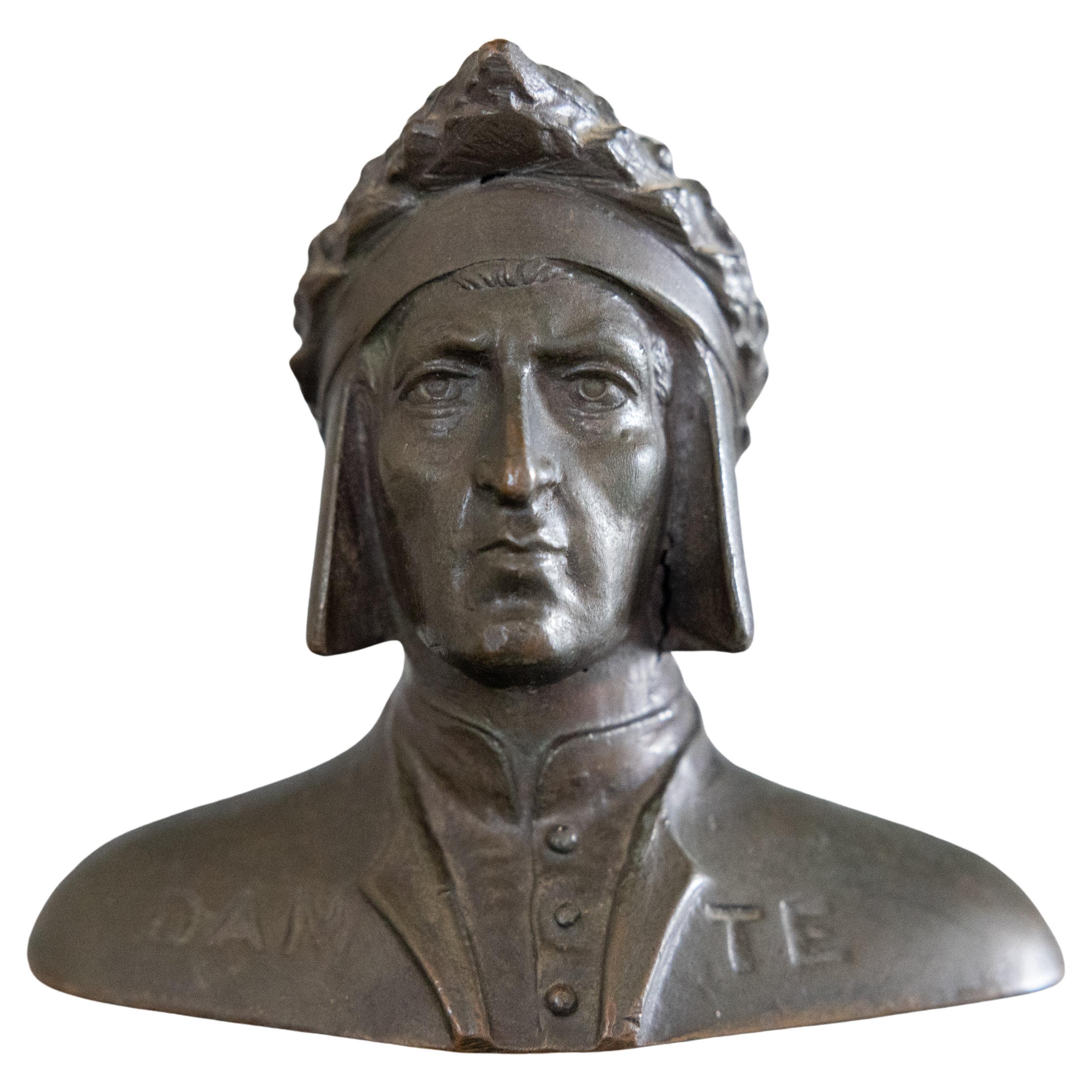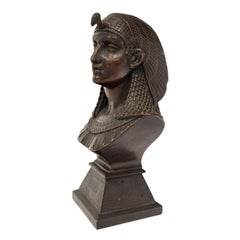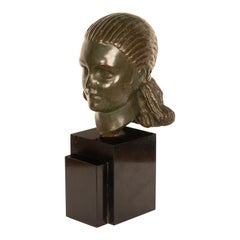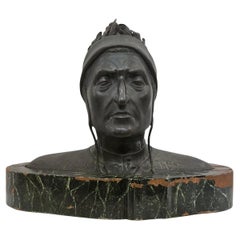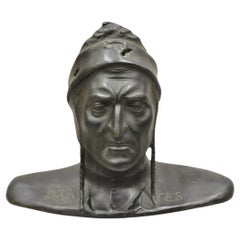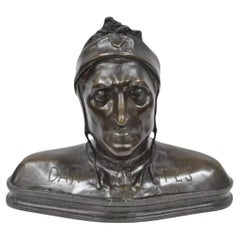Items Similar to Antique Italian Grand Tour Bronze Marble Bust Sculpture Dante Alighieri 1880
Want more images or videos?
Request additional images or videos from the seller
1 of 15
UnknownAntique Italian Grand Tour Bronze Marble Bust Sculpture Dante Alighieri 1880Circa 1880
Circa 1880
$2,895
£2,196.66
€2,511.68
CA$4,043.53
A$4,495.86
CHF 2,347.49
MX$54,725.51
NOK 29,952.92
SEK 28,064.45
DKK 18,745.16
Shipping
Retrieving quote...The 1stDibs Promise:
Authenticity Guarantee,
Money-Back Guarantee,
24-Hour Cancellation
About the Item
A good antique Italian Grand Tour Bronze and marble bust of Dante Alighieri, circa 1880.
The bronze is most likely Florentine and modelled as the 13th century Italian Poet, writer and philosopher Dante Alighieri (1265-1321), the writer of one of literatures most important works, "The Divine Comedy". The bronze was created by the lost wax method and sits on the original and substantial variegated marble plinth. Condition is very good.
Mounted: 16" tall x 19" wide x 8.5" deep - 50.5lbs total
The bronze bust alone (not mounted): 12.5" tall x 17" wide x 7.5" deep - 15lbs
- Creation Year:Circa 1880
- Dimensions:Height: 16 in (40.64 cm)Width: 19 in (48.26 cm)Depth: 9 in (22.86 cm)
- Medium:
- Movement & Style:
- Period:
- Condition:Condition is very good.
- Gallery Location:Portland, OR
- Reference Number:Seller: BB-86771stDibs: LU1366210432172
About the Seller
5.0
Platinum Seller
Premium sellers with a 4.7+ rating and 24-hour response times
Established in 1990
1stDibs seller since 2020
57 sales on 1stDibs
Typical response time: 1 hour
- ShippingRetrieving quote...Shipping from: Portland, OR
- Return Policy
Authenticity Guarantee
In the unlikely event there’s an issue with an item’s authenticity, contact us within 1 year for a full refund. DetailsMoney-Back Guarantee
If your item is not as described, is damaged in transit, or does not arrive, contact us within 7 days for a full refund. Details24-Hour Cancellation
You have a 24-hour grace period in which to reconsider your purchase, with no questions asked.Vetted Professional Sellers
Our world-class sellers must adhere to strict standards for service and quality, maintaining the integrity of our listings.Price-Match Guarantee
If you find that a seller listed the same item for a lower price elsewhere, we’ll match it.Trusted Global Delivery
Our best-in-class carrier network provides specialized shipping options worldwide, including custom delivery.More From This Seller
View AllAntique Art Nouveau Female Carrara Marble Gilt Bronze Bust Statue Sculpture 1900
Located in Portland, OR
A very beautiful antique Art Nouveau bronzed Carrara marble sculpture bust of a young maiden circa 1900, by Gustave Van Vaerenbergh (1871-1927).
The sculpture portrays a beautiful young maiden made from Cararra marble, she is wearing a laurel wreath in her hair. She wears a bronzed bodice with leaf decoration in relief and is raised on a varigated grey & white socle base. The sculpture is signed to the rear " G. V. Vaerenbergh" and numbered "1173", the bust is in excellent condition.
Gustave Van Vaerenbergh attended classes at the Academy of Fine Arts in Ghent, Belgium from 1888 to 1890. Like many artists from a modest background (he was the son of a shoemaker) , Gustave Van Vaerenbergh went to work in companies where he could use his artistic talent and education for commercial purposes.
In 1901 he moved to Saint-Josse-ten-Noode , and a year later to Schaerbeek where he would live for the rest of his life. He went to work there as a " mouleur en plâtre " (modeller or maker of matrices for plaster statues) at the company A. Carli Frères in the L'Olivierstraat in Schaerbeek, a company that produced commercial statues. This successful company, which was active from the beginning to the middle of the twentieth century , initially had about 20 employees and at its peak about 100 employees. The statues were distributed worldwide. Antonio Carli, a sculptor, was the founder of the Atelier A. Carli Frères, together with family members. They came from Bagni di Lucca...
Category
Early 1900s Art Nouveau Figurative Sculptures
Materials
Marble
Antique French Egyptian Revival Bronze Bust Sculpture Statue "Queen of Babylon"
Located in Portland, OR
A good antique cast bronze sculpture an Egyptian Revival bust "The Queen of Babylon", by the 19th century French sculptor Paul Auguste Gagne, circa 1875.
This rare & unusual bronze b...
Category
1870s French School Figurative Sculptures
Materials
Bronze
Antique French Art Deco Bronze Bust Sculpture Head of Beautiful Young Girl 1920
By Marcel-André Bouraine
Located in Portland, OR
Antique French Art Deco Bronze bust sculpture of a beautiful young woman, by Marcel Andre Bouraine (1886-1948), and cast by the Etling foundry, Paris, circa 1920.
The bronze depicts...
Category
1920s Art Deco Figurative Sculptures
Materials
Marble, Bronze
Antique French Art Nouveau Bronze Female Bust "Phryne" Emanuel Villanis 1900
By Emmanuel Villanis
Located in Portland, OR
Antique, Art Nouveau bronze of a beautiful maiden in the Neo-Classical manner by Emmanuel Villanis, Circa 1900.
The bronze, titled "Phryne" depicts a beautiful Neo-Classical maiden, ...
Category
Early 1900s Art Nouveau Figurative Sculptures
Materials
Bronze
Antique French Art Nouveau Bronze Figure Statue Sculpture "Prise de Corsaire"
By Emmanuel Villanis
Located in Portland, OR
A fine antique large French Art Nouveau Bronze Figural Sculpture, titled "Prise de Corsaire" by Emmanuel Villanis (1858-1914), circa 1900.
This very...
Category
Early 1900s Art Nouveau Figurative Sculptures
Materials
Bronze
Antique French Polish Gilt Bronze Statue Sculpture Figure Sword Bladesmith 1890
Located in Portland, OR
A fine antique French gilt bronze sculpture of a swordsmith, by the French- Polish artist & sculptor Henryk II Kossowski (1855-1921), the bronze dating to 1890.
The bronze depicts a ...
Category
1890s French School Figurative Sculptures
Materials
Alabaster, Bronze
You May Also Like
Antique Bust of Dante Alighieri
Located in New York, NY
A late 19th Century Italian bronze bust of the poet Dante.
Measurements:
Length: 19.5"
Depth: 10"
Height: 15.5"
Category
Antique Late 19th Century Italian Busts
Materials
Bronze
Antique Cast Bronze 9" Dante Dantes Alighieri Bust Sculpture Statue
Located in Philadelphia, PA
Antique Cast Bronze 9" Dante Dantes Alighieri Bust Sculpture Statue. Circa Late 19th Century. Measurements: 9" H x 11" W x 6"
Category
Antique Late 19th Century Classical Greek Figurative Sculptures
Materials
Bronze
Antique Dante Alighieri Grand Tour Bronze Bust Sculpture Statue on Marble Plinth
Located in Philadelphia, PA
Antique Dante Alighieri Grand Tour Bronze Bust Sculpture Statue on Marble Plinth. Item features fine bronze casting, beautiful patina, remarkable details, on beveled edge marble plin...
Category
Early 20th Century Unknown Neoclassical Figurative Sculptures
Materials
Bronze
Art Nouveau Dante Alighieri Bust Antique Italy, 1900s
Located in Nuernberg, DE
Beautiful Art Nouveau bronzed colored plaster bust. Bust with lots of patina, damages, as found condition, this adds lots of character to the item. A nice addition in every living ro...
Category
Antique Early 1900s Italian Art Nouveau Busts
Materials
Plaster
19th Century Italian Grand Tour Bronze Bust of Dante
Located in San Francisco, CA
An exceptional large antique Italian Grand Tour Bronze and bust of Dante Alighieri, mid to late 19th century circa 1880. This fine bronze is modeled as the 13th century Italian Poet,...
Category
Antique 19th Century Italian Grand Tour Busts
Materials
Bronze
19th Century Petite Italian Grand Tour Souvenir Bronze Bust of Dante Alighieri
Located in Pearland, TX
A fine antique 19th Century petite Grand Tour souvenir bronze bust of Italian poet Dante Alighieri. This handsome bust is well cast with exquisite details and lovely original patina....
Category
Antique 19th Century Italian Grand Tour Busts
Materials
Bronze
More Ways To Browse
13th Century
Marble Sculpture Antique
Grand Tour Bronze
Marble Sculpture Plinth
Antique Grand Tour Bronze Sculpture
Italian Grand Tour Bronzes
Tall Marble Sculpture
Florentine Sculpture
19th Century Italian Grand Tour Bronze Sculpture
Bronze Dante
Busts Of Philosophers
Marble Philosopher
Dante Bust
Antique Dante Bust
Dante Marble
Alighieri Bust
David Marshall Chair
Denis Mitchell
